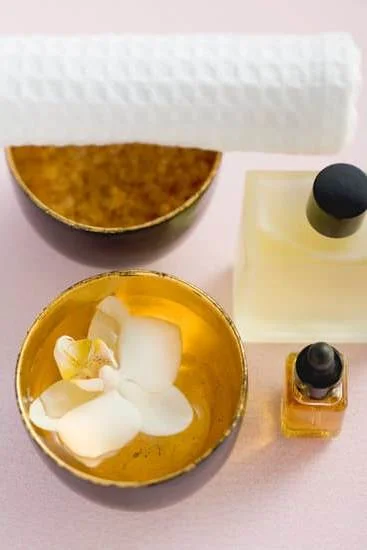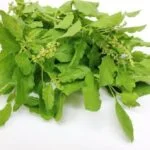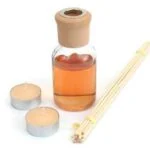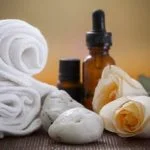Aromatherapy has seen a surge in popularity in recent years as individuals seek natural alternatives to enhance their well-being. One essential oil that has gained particular attention is tea tree oil, known for its versatile properties and soothing effects. As we dive into the world of tea tree oil aromatherapy, we will explore its historical origins, the concept of aromatherapy itself, and the numerous health benefits it provides. So, what exactly does tea tree oil aromatherapy do?
Tea tree oil has become a popular choice in aromatherapy due to its rich history and wide range of applications. Historically, tea tree oil was used by indigenous Australian communities for its medicinal properties. Native to Australia, the tea tree (Melaleuca alternifolia) holds significance in Aboriginal culture as an essential part of traditional healing practices. Today, tea tree oil continues to be valued for its many therapeutic benefits.
The concept of aromatherapy revolves around using essential oils extracted from various plants to promote physical and mental well-being. Aromatherapy can be enjoyed through inhalation, topical application, and sometimes even ingestion under professional guidance. By harnessing the power of scent, individuals can experience a wide variety of benefits including reduced stress levels, improved sleep quality, and enhanced immune function.
In the following sections, we will delve further into the history and origins of tea tree oil as well as explore its properties and composition. Additionally, we will discuss the health benefits associated with using tea tree oil in aromatherapy; from treating skin conditions to relieving respiratory issues and promoting overall wellness.
Furthermore, we will also uncover the mental and emotional benefits that come with incorporating tea tree oil into your aromatherapy routine. However, before we delve into these aspects, let us first understand the historical significance behind tea tree oil and how it gained recognition as an invaluable tool in natural therapy methods.
History and Origins of Tea Tree Oil
Tea tree oil has a rich history that dates back centuries. Indigenous Australian communities, particularly the Aboriginal people, have long been familiar with the healing properties of tea tree oil. The use of this essential oil in traditional medicine has been a key aspect of their cultural practices for generations.
The origins of tea tree oil can be traced back to the leaves of the Melaleuca alternifolia tree, which is native to Australia. Aboriginal communities discovered the medicinal benefits of this tree and its leaves thousands of years ago. They used tea tree leaves for various purposes such as treating wounds, relieving skin infections, and alleviating respiratory issues.
The knowledge and usage of tea tree oil were passed down through generations, with indigenous methods being refining over time to maximize its effectiveness. It was not until the 1920s that tea tree oil gained recognition outside of Indigenous communities when its antiseptic properties were officially recognized by scientific research.
Today, tea tree oil continues to be highly regarded for its versatile and potent healing properties. It is commonly included in many skincare products like soaps, shampoos, and lotions due to its ability to combat bacteria and fungi. Additionally, it remains an essential ingredient in pharmaceutical preparations for topical treatments such as acne medications or insect bite creams.
The historical significance of tea tree oil cannot be overstated when it comes to understanding its popularity in aromatherapy today. Its strong connection to indigenous culture and its centuries-long use in traditional medicine make it a trusted choice for those seeking natural remedies for various ailments. As we delve further into the world of aromatherapy with tea tree oil, it is important to recognize and respect the roots from which this powerful essential oil originates.
What is Aromatherapy?
Aromatherapy is a holistic healing practice that utilizes the natural fragrances of essential oils to promote physical, mental, and emotional well-being. It involves the use of aromatic substances extracted from plants, such as tea tree oil, to enhance the therapeutic effects. In this section, we will delve into what exactly aromatherapy is and explore its different ways of application.
Defining Aromatherapy
Aromatherapy can be defined as the art and science of using essential oils for therapeutic purposes. Essential oils are highly concentrated plant extracts that capture the beneficial compounds found in various parts of plants, including flowers, leaves, stems, bark, and roots. These oils contain unique aromatic molecules that have physiological and psychological effects on our bodies.
The primary goal of aromatherapy is to promote harmony and balance within the body and mind by utilizing the powerful properties of essential oils. When inhaled or applied topically (in diluted form), these oils interact with our olfactory system and skin receptors to elicit specific responses in our body’s systems.
Methods of Application
There are three main ways to use aromatherapy: inhalation, topical application, and ingestion (although ingestion is not recommended for all essential oils). Inhalation is one of the most common methods in which essential oils are diffused into the air through various devices like diffusers or simply by adding a few drops to a bowl of hot water. This allows the aroma to be inhaled, activating the limbic system in our brains that controls emotions and memories.
Topical application involves diluting essential oils with carrier oils like almond oil or coconut oil before applying them directly to the skin through massage or other targeted techniques. The skin readily absorbs these aromatic molecules into the bloodstream, allowing them to work their magic on specific areas or throughout the body.
It’s important to note that while some essential oils may be safe for ingestion, this method should only be used under the guidance of a qualified healthcare professional. Ingesting essential oils often requires careful dilution and adherence to specific dosages to avoid any potential side effects.
Benefits and Risks
Aromatherapy offers a range of benefits for both physical and mental well-being. The use of tea tree oil in aromatherapy can provide relief from various skin conditions, alleviate respiratory issues, and bolster the immune system. Additionally, the inhalation of tea tree oil can have a positive impact on mental health by reducing stress and anxiety, improving focus, and promoting relaxation.
However, it is crucial to understand that while aromatherapy has many potential benefits, there are also some risks involved. Some individuals may experience adverse reactions or sensitivities to certain essential oils, including tea tree oil. It is important to conduct a patch test before using any new essential oil and consult with a healthcare professional if you have any underlying health conditions or concerns.
In the next section, we will explore the properties and composition of tea tree oil that make it suitable for aromatherapy.
Properties and Composition of Tea Tree Oil
Tea tree oil is derived from the leaves of the Melaleuca alternifolia tree, a plant native to Australia. This essential oil has gained popularity in aromatherapy due to its unique properties and composition.
The chemical composition of tea tree oil is quite complex, consisting of over 100 different compounds. One of the main components of tea tree oil is terpinen-4-ol, which is responsible for many of its therapeutic benefits. Terpinen-4-ol has been found to possess antimicrobial, antifungal, and antibacterial properties, making tea tree oil a powerful natural remedy for various conditions.
Besides terpinen-4-ol, other key constituents found in tea tree oil include cineole, gamma-terpinene, and alpha-terpineol. These compounds contribute to the oil’s anti-inflammatory and antiseptic properties. The combination of these chemical constituents makes tea tree oil an effective option for treating skin issues such as acne, eczema, and fungal infections.
Moreover, tea tree oil has been recognized for its ability to support respiratory health. When used in aromatherapy, the inhalation of tea tree oil vapor can help alleviate symptoms of sinus congestion and bronchitis. The antimicrobial properties of tea tree oil may also aid in fighting respiratory infections caused by bacteria or viruses.
It is worth noting that while tea tree oil offers numerous health benefits when used appropriately, it should be used with caution. Direct application on the skin without proper dilution can lead to skin irritations or allergic reactions in some individuals. To ensure safety and minimize potential side effects, it is recommended to dilute tea tree oil with a carrier oil before topical application.
Health Benefits of Tea Tree Oil Aromatherapy
Tea tree oil is well-known for its numerous health benefits when used in aromatherapy. This section will explore some of the key health benefits of incorporating tea tree oil into your aromatherapy routine.
One primary use of tea tree oil in aromatherapy is for treating various skin conditions. Its antimicrobial and anti-inflammatory properties make it effective against acne, eczema, and fungal infections. Tea tree oil can help reduce inflammation, fight bacteria on the skin, and promote healing. It can be applied topically or added to bath products for a soothing and healing effect on the skin.
In addition to its benefits for the skin, tea tree oil aromatherapy can also provide relief from respiratory issues. Inhaling tea tree essential oil can help clear congestion in the sinuses and lungs, making it useful for relieving symptoms of sinusitis, bronchitis, and other respiratory infections. Its antiseptic properties can also help prevent secondary infections that may arise from respiratory illnesses.
Furthermore, using tea tree oil in aromatherapy can enhance the immune system and promote overall well-being. The oil’s antiviral properties make it a great natural remedy to boost the body’s defenses against common illnesses like colds and flu. It may also have a positive impact on overall health by reducing inflammation throughout the body.
Overall, incorporating tea tree oil into your aromatherapy routine can provide numerous health benefits. From promoting healthy skin to relieving respiratory issues and enhancing immunity, this essential oil is a versatile tool for improving overall well-being.
| Health Benefits | Uses |
|---|---|
| Treating skin conditions | – Acne
|
| Relieving respiratory issues | – Sinus congestion
|
| Enhancing the immune system | – Boosting immunity
|
Mental and Emotional Benefits
Relieving stress, anxiety, and depression
Tea tree oil aromatherapy has been found to have positive effects on mental and emotional well-being. Many individuals use tea tree oil in their aromatherapy routines as a natural remedy for relieving stress, anxiety, and depression. The inhalation of tea tree oil can help trigger the release of endorphins, which are known as the body’s natural “feel-good” chemicals.
Studies have shown that tea tree oil has properties that can help reduce anxiety levels and promote relaxation. Its soothing aroma can help calm the mind, making it an ideal choice for individuals who struggle with stress or anxiety. Additionally, tea tree oil has been found to have antidepressant effects by boosting mood and combating feelings of sadness or low energy.
Improving concentration and cognitive function
In addition to its impact on emotional well-being, tea tree oil aromatherapy has also been associated with improved concentration and cognitive function. The refreshing scent of tea tree oil can stimulate the brain’s limbic system, which is responsible for regulating emotions, memory, and motivation.
By inhaling tea tree oil during aromatherapy sessions, individuals may experience increased focus and mental clarity. This makes it a popular choice among students or individuals who require heightened attention for work or studying. Furthermore, research suggests that the properties of tea tree oil may improve cognitive performance by enhancing brain activity.
Inducing relaxation and better sleep
Tea tree oil aromatherapy is known for its ability to induce relaxation and promote better sleep. The calming scent of tea tree oil can help create a soothing atmosphere that supports winding down after a long day. By creating a peaceful environment through aromatherapy, individuals may find it easier to relax both mentally and physically before bedtime.
Furthermore, tea tree oil contains certain compounds that have sedative effects on the body. These compounds can help regulate sleep patterns and promote a deeper, more restful sleep. For individuals who struggle with insomnia or other sleep disorders, incorporating tea tree oil into their bedtime routine may offer natural relief.
Overall, the mental and emotional benefits of tea tree oil aromatherapy make it a versatile and effective choice for individuals seeking a natural approach to stress reduction, improved cognitive function, and better sleep quality. However, it is important to consider individual sensitivities and consult with a healthcare professional before use, especially for those with pre-existing medical conditions or who are pregnant.
Safety Precautions and Side Effects
When using tea tree oil for aromatherapy, it is important to take certain safety precautions and be aware of potential side effects. While tea tree oil can offer numerous health benefits, it is a powerful essential oil that should be used with caution.
Firstly, it is crucial to properly dilute tea tree oil before using it topically or inhaling it. Undiluted tea tree oil can cause skin irritation, allergic reactions, and sensitization. The recommended dilution ratio is typically 1-2 drops of tea tree oil for every 12 drops of a carrier oil such as almond oil or coconut oil. This helps to reduce the risk of skin irritation.
Additionally, it is important to do a patch test before using tea tree oil on a larger area of the body. Apply a small amount of diluted tea tree oil to your forearm and wait at least 24 hours to see if any negative reactions occur. If you experience redness, itching, or swelling, discontinue use.
Tea tree oil should not be ingested unless under the supervision of a qualified healthcare professional. Ingesting undiluted or large amounts of tea tree oil can lead to toxicity symptoms such as confusion, hallucinations, drowsiness, and even coma in severe cases.
Certain individuals should avoid using tea tree oil altogether or consult with a healthcare professional before doing so. Infants and young children are more sensitive to essential oils and may experience adverse reactions. Pregnant women should use caution as there is limited research on the effects of tea tree oil during pregnancy. It is always best to seek guidance from a healthcare provider when considering the use of essential oils during pregnancy.
Overall, it is important to use tea tree oil in aromatherapy responsibly and follow safety guidelines for optimal results. Consulting with a healthcare professional can provide personalized advice based on individual health circumstances and ensure safe usage.
| Safety Precautions | Side Effects |
|---|---|
| – Proper dilution is essential to avoid skin irritation and sensitization | – Skin irritation, allergic reactions, and sensitization may occur if not properly diluted or used topically |
| – Perform a patch test before using tea tree oil on a larger area of the body | – Redness, itching, or swelling may occur in response to tea tree oil |
| – Do not ingest tea tree oil without professional supervision | – Ingesting undiluted or large amounts of tea tree oil can lead to toxicity symptoms |
| – Infants and young children should avoid using tea tree oil | – Children are more sensitive to essential oils and may experience adverse reactions |
How to Use Tea Tree Oil for Aromatherapy
Tea tree oil is a popular choice in aromatherapy due to its numerous health benefits and versatile nature. If you’re interested in incorporating tea tree oil into your aromatherapy routine, it’s important to know the proper ways to use and dilute it for optimal results. Here is a step-by-step guide on how to use tea tree oil for aromatherapy:
- Dilution: Tea tree oil is highly concentrated and can be too potent to use directly on the skin or inhale without proper dilution. It is recommended to mix tea tree oil with a carrier oil, such as jojoba, almond, or coconut oil, before topical application. A good starting point for dilution is about 1-2 drops of tea tree oil per teaspoon of carrier oil.
- Topical Application: Once you have diluted the tea tree oil with a carrier oil, you can apply it directly onto the skin. Tea tree oil can be used to treat various skin conditions like acne, eczema, and fungal infections. Apply the diluted mixture onto the affected area by gently massaging it in circular motions until absorbed.
- Inhalation: Inhalation of tea tree oil vapors can provide respiratory benefits and promote relaxation. You can achieve this through several methods such as using a diffuser, adding a few drops of tea tree oil to boiling water and inhaling the steam (making sure to close your eyes), or adding a few drops of tea tree oil onto a cloth or tissue and inhaling deeply.
It’s important to note that while tea tree oil is generally considered safe when used properly, some individuals may experience allergic reactions or sensitivities. Before using tea tree oil for aromatherapy, consider conducting a patch test on a small area of your skin to check for any adverse reactions.
Overall, incorporating tea tree oil into your aromatherapy routine can provide numerous health benefits and contribute to overall well-being. Whether you choose to use it topically, through inhalation, or a combination of both, tea tree oil offers a versatile and effective addition to your aromatherapy practices.
Conclusion
In conclusion, tea tree oil aromatherapy offers a wide range of health benefits and has been used for centuries due to its antimicrobial, anti-inflammatory, and antiseptic properties. It is a versatile essential oil that can be used topically, inhaled, or ingested (if applicable) to treat various skin conditions, respiratory issues, and promote overall well-being.
Additionally, tea tree oil aromatherapy has shown positive effects on mental and emotional health, such as relieving stress and anxiety, improving concentration and cognitive function, and inducing relaxation and better sleep.
However, it is important to exercise caution when using tea tree oil in aromatherapy. Potential side effects and sensitivities should be considered, and proper dilution and usage guidelines should be followed. Certain individuals like infants or pregnant women should avoid using tea tree oil without consultation with a healthcare professional.
To incorporate tea tree oil into your aromatherapy routines, you can follow a step-by-step guide for dilution ratios and mixing with carrier oils. Different methods of using tea tree oil include diffusion, inhalation, and topical application.
Frequently Asked Questions
How do you use tea tree aromatherapy?
Tea tree aromatherapy is commonly used by diffusing tea tree essential oil into the air, typically through a diffuser. This allows the aromatic compounds of tea tree oil to be released and inhaled, providing potential benefits.
Another way to use tea tree aromatherapy is to add a few drops of tea tree essential oil to a carrier oil, such as coconut or jojoba oil, and apply it topically to the skin. This can be done for various purposes like soothing skin irritations or improving overall skin health.
Does tea tree essential oil make you sleepy?
Tea tree essential oil is not known for making people sleepy. In fact, it has a reputation for its stimulating and invigorating properties. Many people use tea tree oil as a natural energizer or pick-me-up when feeling fatigued or sluggish.
It can help promote mental clarity and increase alertness. However, everyone’s response to essential oils may vary, so it’s best to pay attention to your own reactions when using tea tree oil or any other essential oil.
How does tea tree oil affect the body?
Tea tree oil can have various effects on the body due to its antimicrobial and anti-inflammatory properties. When applied topically, it can help fight off certain bacteria, fungi, and viruses that may cause skin infections or irritations.
It has been traditionally used as a natural remedy for acne, athlete’s foot, and other similar conditions due to its ability to reduce inflammation and kill microbes.

Are you looking for a natural way to improve your health and wellbeing?
If so, aromatherapy may be the answer for you.





